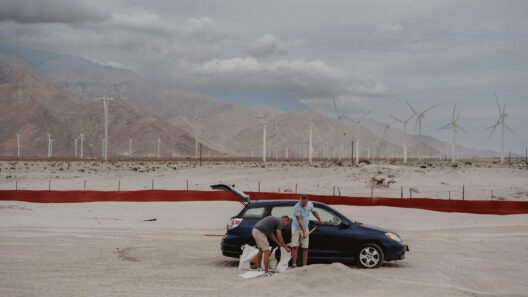As climate change accelerates and its repercussions become increasingly evident, the quest for sustainable transportation alternatives has gained prominence. Amid this discourse, Amtrak emerges as a potential catalyst for reducing greenhouse gas emissions. While Amtrak has long been seen as a vestige of American rail travel, it also embodies a promise for a greener future in transportation.
Can rail travel truly mitigate climate change? The answer warrants an exploration of both the environmental implications of train travel and the challenges that confront this mode of transportation.
The Carbon Footprint of Transportation
Transportation is a major contributor to global warming, with the sector accounting for nearly 30% of total greenhouse gas emissions in the United States. Personal vehicles, airplanes, and freight trucks emit copious amounts of carbon dioxide, making it imperative to seek more environmentally friendly alternatives. It is within this context that rail travel presents itself as a compelling option.
Compared to cars and planes, trains are generally more energy-efficient. According to the Environmental Protection Agency (EPA), passenger trains emit, on average, 45% less greenhouse gas per mile than cars and around 38% less than commercial airplanes. This stark contrast can be attributed to the higher capacity of trains. With the ability to transport dozens or even hundreds of passengers at a time, trains effectively reduce the per capita emissions when compared to individual vehicle use. Furthermore, advancements in technology, such as electric trains powered by renewable energy, have the potential to further reduce emissions, potentially transforming the rail system into a cornerstone of sustainable transport.
Amtrak’s Commitment to Sustainability
Amtrak’s operations and philosophy are poised for a transition that aligns with sustainability. The organization has already demonstrated its commitment to reducing its carbon footprint by investing in more fuel-efficient locomotives and upgrading outdated infrastructure. Their ongoing efforts to electrify portions of their network promise to further enhance the efficiency of their services. With recent initiatives aimed at achieving net-zero emissions by 2040, Amtrak stands at a pivotal juncture, aiming to redefine rail travel as a viable eco-friendly alternative.
This commitment may resonate with an audience increasingly attuned to the climate crisis. For instance, using Amtrak can be attractive for short- to medium-range trips, where flying might otherwise be the go-to option for many travelers. The journey itself can be a splendid experience, allowing passengers to appreciate the landscape rather than merely moving from point A to point B. As a matter of fact, it can serve as a form of restorative travel, where the journey is valued as much as the destination.
Addressing the Challenges
Despite its many advantages, Amtrak faces significant hurdles that may impede its potential to combat climate change effectively. First and foremost is the third-party nature of rail infrastructure ownership. While Amtrak operates trains, the tracks themselves are owned by various freight companies and other entities. This jurisdiction results in a convoluted operational framework that sometimes prioritizes freight movement over passenger services, leading to delays and discontinuities.
Moreover, train service in the United States lags behind that of some other nations, such as Japan and France, where high-speed rail systems efficiently connect cities and encourage their usage. The lack of investment in rail infrastructure and services in the U.S. is glaring. The underutilization of rail transport for long-distance travel contributes to a reliance on more polluting modes of transportation, such as flights and cars. Therefore, enhancing the rail network and promoting public awareness about its environmental benefits are crucial to fostering a shift in mindset.
The Quality of the Experience
One key to unlocking Amtrak’s potential lies in improving the overall passenger experience. Generating enthusiasm and fostering loyalty among riders may precipitate behavioral changes toward train travel. Outdated trains, limited routes, and inconsistent services are recurring critiques that dampen enthusiasm. While Amtrak has made strides in upgrading its fleet, continuous investment in modern amenities and comfort can make rail travel a more appealing choice for eco-conscious consumers.
The shift towards sustainability requires a mindset modification, recognizing the significance of collective action in addressing climate change. Amtrak’s mission to connect communities and reduce emissions aligns with an evolving consciousness that prizes environmental responsibility. Encouraging a culture of train travel not only mitigates reliance on more carbon-intensive modes of transportation but also promotes a societal shift towards sustainability.
Conclusion: Charting a New Course
The question remains: can Amtrak indeed make a significant impact on reducing climate change and global warming? While challenges abound, especially regarding infrastructure and service quality, the potential for rail transport to reduce emissions stands validated. A commitment to sustainability from organizations like Amtrak holds the promise of transforming the travel experience while mitigating the catastrophic effects of climate change.
As the world grapples with the environmental crisis, embracing efficient rail transit appears not merely advisable but essential. A shift in perspective—viewing rail travel as not a relic of the past, but a vital element of a sustainable future—may inspire a new age of transportation that tantalizingly intertwines convenience, ecology, and a renewed appreciation for our environment.






